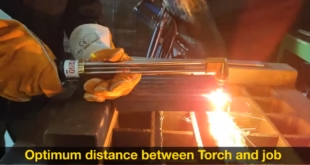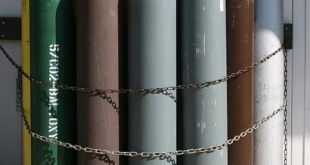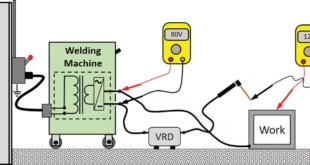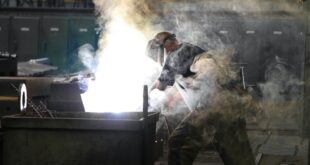Welder PPE for Fumes Reduction
Welding fumes are tiny airborne particles produced whenever metals are melted. For welders, those particles are the invisible hazard that accumulates in the breathing zone and, over time, can produce both immediate and long-term health effects. Controlling fume exposure is therefore a primary safety responsibility in any shop: it protects worker health, keeps employers in regulatory compliance, and reduces lost time and liability.
Understanding welding fumes
Welding fume is a complex aerosol: particle sizes are mainly in the sub-micron to a few microns range, and the chemical composition depends on base metals, filler metal, coatings, and fluxes. Common components include iron, manganese, chromium (including hexavalent chromium in some stainless alloys), nickel, zinc (from galvanized steel), and lead (from plated parts or metal contaminants). These metals behave differently in the body — some are primarily respiratory irritants, others have neurological or carcinogenic effects.
Acute exposures can cause metal fume fever (flu-like symptoms after inhaling zinc oxide or other oxides). Chronic exposures are more serious: long-term inhalation has been associated with reduced lung function, chronic bronchitis, pneumoconiosis-type conditions, and neurological effects (notably from manganese), and some welding processes increase lung cancer risk. Because different agencies set different limits for components (OSHA, NIOSH, ACGIH), a prudent shop follows the strictest appropriate guidance and documents exposure control.
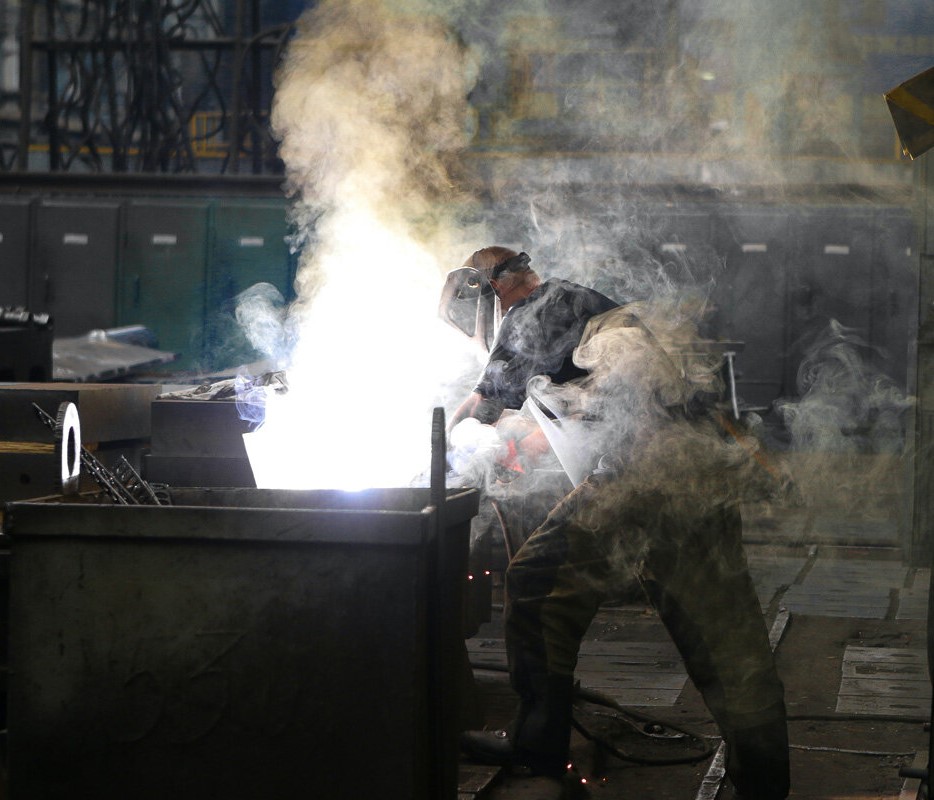
Steps to control welding fumes
PPE is essential, but it’s the last line of defense. The best approach is to first remove or replace the fume source, then use engineering and administrative controls, and rely on PPE only when other measures can’t fully protect workers.
Eliminate/substitute exposures where possible (e.g., substitute low-fume consumables, remove coatings before welding).
Use engineering controls (local exhaust ventilation, fume extraction torches, booths) to remove fumes at source.
Apply administrative controls (task rotation, scheduling, signage, training).
Where residual exposure remains, use PPE (respirators, helmets, protective clothing) as the last line of defense.
Engineering controls
Local exhaust ventilation
Local exhaust ventilation (LEV) is the most effective day-to-day engineering control for welding fume. The principle is simple: place a hood or capture device close enough to the arc that the extractor draws fumes away before they reach the breathing zone. Regulations and guidance emphasize that LEV should be movable and placed as close as practicable to the weld. Properly designed LEV prevents dispersion, reduces shop-wide concentrations, and often lowers the required level of respiratory protection.
Two practical points to remember: (1) capture velocity matters — the hood must produce enough local airflow at the capture point to entrain welding fumes, and (2) placement matters more than sheer port size: a flexible arm or a small shrouded nozzle placed within a few inches of the arc is usually far better than a large hood sitting several feet away.
On-Torch Fume Extraction, booths, and portable extractors
Fume-extracting torches pull fumes through the torch head into an inline filter. They work well for overhead or localized welding and are particularly valuable for repetitive, high-rate work. Extraction booths and downdraft tables are useful for small parts and repetitive shop tasks; portable extractors add flexibility for fieldwork. Combining a fume extraction gun with room ventilation reduces both immediate exposure to the welder and ambient shop contamination.
General (dilution) ventilation
General ventilation dilutes contaminants and is valuable for overall shop air quality, but it is not a substitute for LEV when the source is a point emission such as welding. In an analogy: dilution is like adding water to soup — it changes concentration but doesn’t remove the offending ingredient from the pot. Use general ventilation for comfort and background dilution, but rely on LEV for effective exposure control.
Administrative controls
Administrative controls are procedural: schedule high-fume jobs when fewer people are present, require pre-cleaning of coatings (e.g., remove zinc plating where practical), restrict access to welding zones, rotate staff to limit individual time in high-exposure tasks, and mandate training on fume hazards and PPE use. Simple rules — like welding downwind, using tack welding to minimize time, and performing hot work outdoors when possible — can materially reduce fume intake.
PPE as the last line of defense
When engineering and administrative measures don’t reduce exposures below safe levels, PPE is required. For welding fume reduction, PPE includes respirators, welding helmets (sometimes with integrated respirators), protective clothing to reduce skin contamination and secondary exposure, and proper eye protection.
Below we focus on respiratory PPE, because it’s the core fume defense, then cover helmet integration and other PPE.
Respiratory protection
Selecting a respirator requires knowing the contaminant concentration, the contaminant type (particulate only vs particulate + gases/vapors), and the required protection factor.
Filtering facepieces and disposable masks
Disposable filtering facepiece respirators (e.g., N95s) can reduce particulate exposure but have limited protection (APF ≈ 10 for properly fitted units). They do not protect against gases or vapors and are a poor choice when toxic metals such as chromium-VI or manganese require higher protection or when oil aerosols are present. For many welding scenarios where exposures are moderate and particles are the only hazard, a filtering facepiece with proper fit may be an interim control — but do not over-rely on them.
Elastomeric half-mask and full-face respirators with P100 filters
Elastomeric half-mask respirators fitted with P100 (or N100) particulate filters offer higher filtration efficiency (≈99.97% removal of 0.3 μm particles) and an Assigned Protection Factor (APF) of 10 for half-mask and 50 for full-face elastomeric respirators (use the APF that corresponds to the device). They are reusable, economical for long-term shop use, and appropriate when particulate hazards predominate. However, they require fit testing, cleaning, and cartridge/change schedules.
Powered Air-Purifying Respirators (PAPRs)
PAPRs use a battery-driven blower to pull contaminated air through a filter and deliver cleaned air to a hood or tight-fitting facepiece. Advantages: reduced breathing resistance, compatibility with facial hair (if using a loose-fitting hood), and higher assigned protection factors (loose-fit PAPR typically APF = 25; tight-fitting PAPR or full facepiece configurations can have APFs substantially higher, and some configurations yield APFs up to 1,000 when tested). PAPRs are excellent choices for high-exposure tasks, for workers unable to pass tight-fit testing, or when a combination of particulate and gas protection is required (cartridges/combined filters are available).
Supplied air and SCBA for very high exposures or IDLH situations
When airborne concentrations approach IDLH (immediately dangerous to life or health) or when contaminants include gases not removed by cartridges, supplied-air respirators (SARs) or self-contained breathing apparatus (SCBA) are necessary. These systems supply clean air from a remote source or cylinder and are the appropriate choice for confined spaces, unknown atmospheres, or rescue scenarios. OSHA’s respiratory protection logic and APF tables guide the choice depending on concentration, task, and workplace hazards.
Assigned Protection Factors (APFs)
APFs tell you how much a respirator reduces exposure in the breathing zone under real-world use. For example, if an airborne contaminant is at 100 units and your respirator has an APF of 10, the wearer’s expected exposure is 10 units (100 ÷ 10). Select a respirator with an APF that reduces expected exposure below the applicable Exposure Limit (OSHA PEL, NIOSH REL, or ACGIH TLV — follow the strictest appropriate limit for worker protection). For reliability, always consult the regulatory APF tables and choose a respirator that meets or exceeds the required protection.
Fit testing, medical evaluation, and maintenance
Tight-fitting respirators require medical clearance and fit testing per OSHA 1910.134. Elastomeric masks need routine cleaning, scheduled filter replacement, and inspection for cracked facemasks or bad straps. For PAPRs, battery maintenance, HEPA/HE filter replacement, and blower function checks are required. Establish written procedures and records for all these activities in your respiratory protection program.
Welding helmets with integrated respirators
Auto-darkening helmets with PAPR or supplied air integration
Manufacturers offer helmets with integrated PAPR systems or provisions to attach a PAPR hood. These systems combine eye protection and respiratory protection into one ergonomic setup, reducing compatibility problems (e.g., helmet shade interfering with respirator straps) and often increasing user acceptance. For heavy or long tasks, integrated PAPR helmets can improve comfort and compliance — two critical factors for actual protection in practice.
Eye/face/skin protection to reduce contamination
Welding also deposits particulates on clothing and skin. Using full coverage clothing, neck protection, and designated change areas reduces the risk of secondary exposure (contaminated clothing transporting fume particulates to other areas). Encourage welders to change out of work clothes before leaving the shop and to wash hands and face before breaks.
Special welding scenarios that change PPE needs
Galvanized, stainless, and coated materials
Welding galvanized steel produces zinc oxide, which causes metal fume fever and contributes to high particulate loads. Welding stainless steel or certain alloys generates chromium-VI and nickel — both more toxic and sometimes carcinogenic. These materials may require stronger engineering controls and higher-protection respirators (PAPR or supplied air) than mild-steel welding. Always identify materials before welding and consult exposure guidance for specific metals. For example, manganese exposures are regulated and have stricter recommended limits in some guidelines than the OSHA PEL.
Confined spaces and indoor vs outdoor welding
Outdoor welding disperses fumes more rapidly, but still requires care with nearby workers and wind direction. Confined space welding often requires a supplied-air respirator and full atmospheric testing before work begins; a P100 half-mask is often inadequate in a confined space without adequate ventilation and monitoring. Consult confined-space entry procedures and ensure atmospheric testing instruments are used.
Practical PPE program
Air monitoring and exposure assessment (when to test)
Air monitoring is not optional when you suspect exposures could exceed limits. Use personal breathing zone samples during representative tasks to measure fume concentrations. If monitoring shows exposures above limits, improve controls and re-test; document all results. Monitoring also helps to justify respirator selection and the APF requirement used in your program.
Cartridge/filter change schedules, cleaning, inspection, and recordkeeping
Set filter and cartridge replacement schedules based on manufacturer guidance and measured exposures, not arbitrary dates. Maintain inspection logs, cleaning procedures for elastomeric masks, battery checks for PAPRs, and spare parts inventories. Keep record of fit tests, medical exams, and worker training as required by OSHA.
Worker training, donning/doffing, and avoiding cross-contamination
Train welders on donning/doffing procedures (to avoid contaminant transfer to mucous membranes), correct seal checks, how to recognize respirator damage, and why the hierarchy of controls matters. Reinforce that a respirator is only effective if worn when needed and used correctly.
A welder’s quick-use checklist
Identify the base metal and coating before starting.
Use LEV (fume extractor or portable hood) positioned close to the arc.
If fumes include Cr-VI, Mn, Ni, or Pb, use P100 filters or PAPR/supplied air as appropriate.
Fit test tighter respirators; use loose-fit PAPR for facial hair or fit limitations.
Inspect PPE daily; follow cartridge/filter change rules.
Document air monitoring and keep training records.
Procurement tips
Buy NIOSH-approved respirators and HE/ P100 filters from reputable suppliers.
For extractors, check airflow at the tip/nozzle and portability; prefer units with HE/ULPA filters and easy-to-change canisters.
When evaluating PAPR systems, compare APF, battery life, weight, and helmet integration options.
Consider lifecycle costs (filters, service, replacement parts) not just upfront price.
Pilot solutions with a small crew before full deployment and collect user feedback on comfort and usability.
FAQs
What is the simplest respirator I can use for occasional MIG welding on mild steel?
A properly fitted half-mask elastomeric respirator with a P100 particulate filter is often sufficient for occasional mild-steel MIG welding, provided engineering controls reduce ambient fume levels and monitoring indicates exposures below limits. If in doubt, measure breathing-zone concentrations and follow the APF selection process.
Are disposable N95s OK for welding?
Disposable N95s provide limited particulate protection (APF ≈ 10) and do not protect against gases or oil aerosols. They can be used for low-exposure, brief tasks but are not recommended for high-fume welding on galvanized or stainless materials.
When should I choose a PAPR instead of an elastomeric respirator?
Choose a PAPR when higher APF is required, when workers cannot pass fit tests for tight-fitting masks, or when comfort for long durations is important. PAPRs are also good if the task produces both particulates and low levels of gases (with combined filters). Ensure the PAPR configuration meets the required APF for the hazard.
Does welding outdoors mean I don’t need a respirator?
Outdoor welding disperses fumes better, but it doesn’t guarantee safety. Wind, nearby workers, and the type of material (e.g., galvanized or stainless) can still create hazardous exposures. Use local controls when possible and monitor exposures for repeat tasks.
How do I know when filter cartridges need replacement?
Replace particulate filters per manufacturer guidance or sooner if breathing resistance increases, filters are damaged, or monitoring indicates high exposures. For cartridges that remove gases/vapors, follow a change schedule tied to exposure monitoring or use cartridges with an end-of-service-life indicator (ESLI) where available. Record replacement dates and reasons.
Conclusion
Reducing welding fume exposure requires a layered approach: start by eliminating or substituting hazards where feasible, use engineering controls (LEV and fume extraction) to remove fumes at the source, add administrative controls and safe work practices, and apply PPE — particularly properly selected and maintained respirators — as the final, necessary protection. Respirator selection must be informed by measured exposures and by the Assigned Protection Factors of respirator options; for many high-risk welding tasks, P100 filters, PAPRs, or even supplied-air systems are the appropriate choices. Finally, sustained protection depends on training, fit testing, monitoring, and a safety culture that treats fume control as a core part of welding quality and worker wellbeing.
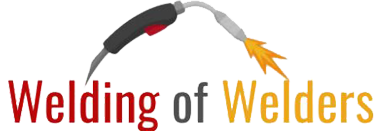 Welding of Welders All about Welding and Welders
Welding of Welders All about Welding and Welders
